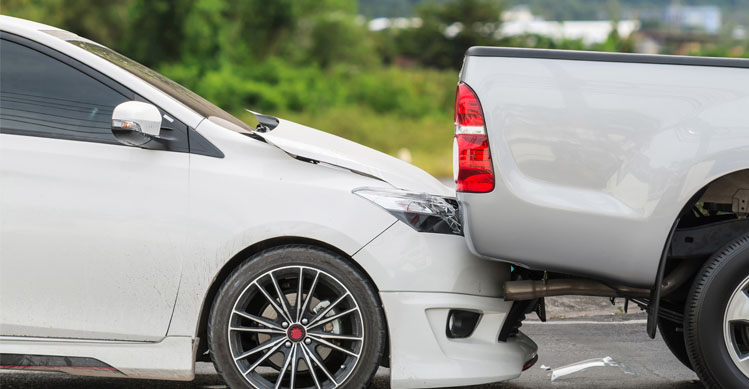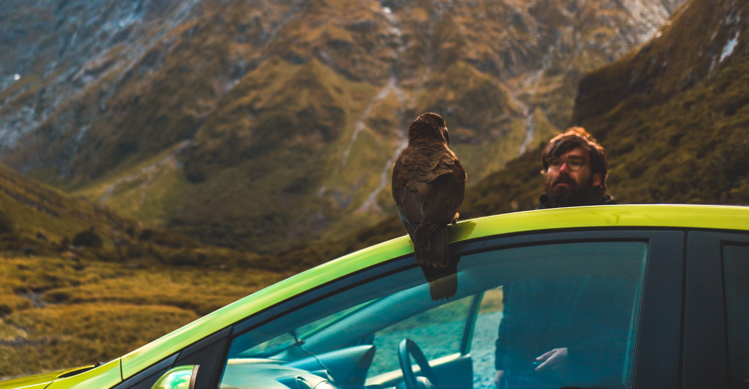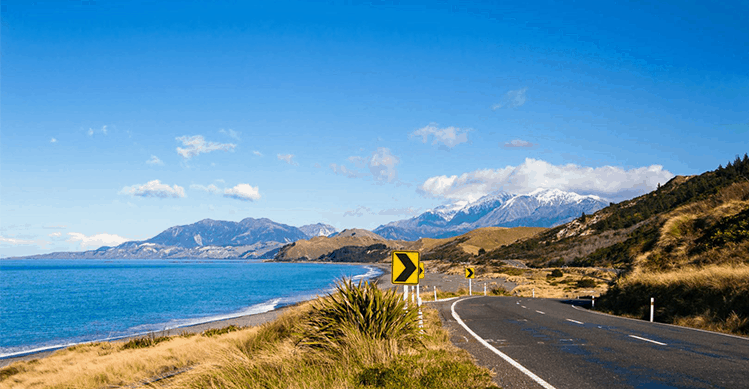Really understanding what makes a country tick means spending more time getting to know the people and places. What better way than a road trip, where you can stop and explore as you wish.
While a road trip requires a bit more planning and effort than a packaged holiday, the payoff is worth it. You’ll have the freedom to stop and discover hidden gems that the other tourists miss. You can get off the beaten track and try local restaurants that the bus won’t take you to. And you’ll be able to stretch your legs and catch a meal wherever you want.
A road trip can end up a lot cheaper than a package holiday, even if you factor in ferries, fuel and tolls. And you’ll never have to rush to make sure you catch your train or plane; if you want to sleep in tomorrow, you can. There’s no baggage allowance to worry about either.
Choose your destination
Your first big decision involves finding a driving route. If you’re a town-hopper, you can plan for a journey with lots of attractions close together, plus scenic routes and lots of little drives. Or, find a few places where you can stay for a few days, with a longer drive between destinations.
When you have your own wheels, you’re not limited by public transport, so if a train, plane or bus doesn’t go there, it’s no worries! Start by making a broad plan of where you want to go, how long you’ll stay at each destination, and how long it takes to travel between point A and point B.
For bonus holiday adventures along the way, use Google to find out what you can do between each of your stops - there are often places of interest and small adventure offshoots along the way. Try using the RoadTrippers app, which is designed specifically for this.
Now that you’ve got your destinations and stops along the way planned, map it all out. Do you want to take the mountainous inland route or meander along the river? Cruise along the coast or through the highways? If you have people in the car who are prone to travel sickness, then it’s probably best to skip the narrow winding roads!
Check the weather too. If you’re driving in winter, will you need chains for snow? Will you leave later in the morning due to road ice? Will it be windy or hot? Some conditions require more effort and skill from the driver.
Get your trusty steed ready
If you’re taking your own car and exploring New Zealand, get it serviced beforehand. Make sure the oil, wiper fluid and water are topped up. If you have a full load of people (or plan to do a lot of shopping), ensure you have enough room for luggage. You might need to add a roof rack or Thule box for overflow luggage. And clean out the car too - you don’t need to start the trip overloaded with rubbish (that will happen during the course of the trip anyway!). Last but not least, ensure you have the right insurance cover for your car.
If you’re going to be road tripping overseas, make sure you rent an appropriate vehicle. Who is driving? Can they drive manual or automatic? While it might seem OK to have a small car for four people, think about the luggage space. It’s worth upgrading to a larger sedan or SUV when you’re tripping with a group. Don't forget travel insurance too - with State's International Travel Insurance plan you'll get cover for your hire car excess as well as your belongings. Quote. Buy. Fly.
It might seem like a good idea at the time to hire a VW camper or convertible, but pick functionality over appearance. Unless you’re an Instagram influencer who needs those perfect scenic shots but can afford a back-up vehicle, stick with ‘boring, but safe’.
Research the driving laws
If you’re not doing a road trip locally, you will likely need to do some research on the road rules. Other than what side of the road you drive on and who gives way, there are other things to think about. Can you drive in that country on your licence? Are the drink driving limits different? Are there any unique rules (such as hook turns in Melbourne CBD) or hazards (like kangaroos or moose crossings)?
Have a budget
While road trips are more economical than some other forms of travel, they can get expensive. Fuel is the biggest expense, so plan where you're going to fill up. Use an app like Gaspy to check where the cheapest place to fill up will be and try to stick to that.
Don’t carry unnecessary weight. The heavier your car, the quicker you’ll burn through fuel. Also, keep to the speed limit. Not only will you avoid speeding fines, but you could save up to 33% on fuel costs.
If you’re wanting to split costs with the other people in the car, there’s an easier way than keeping a notebook and manually tallying up with costs. Grab the app SplitWise. It allows you to enter costs that everyone has contributed to, then it seamlessly calculates who owes who what at the end of the trip.
Prepare for every eventuality
While a sat-nav system makes life easy, it’s not infallible. On Google Maps, you can download maps and routes before you leave, so if you lose internet connection, there’s no loss of direction. Of course you can always stop and ask the locals for guidance – there’s a quaint idea!
Battery packs for USB charging of all devices are good to have on board. You’ll also find that most modern vehicles offer USB charging for your phone.
During the course of a road trip, you end up storing a lot of stuff in your car. Whenever you stop, make sure none of it’s visible from the outside. Thieves can break, enter and steal valuables in seconds. Passports, wallets and electronics can all be stolen in less time than it takes to quickly pop into a dairy to grab a drink. As part of your insurance, you're required to take reasonable steps to prevent anything happening to your stuff, so never make it obvious that your vehicle has anything of value in it and always lock your car, even if you're just popping into the dairy quickly.
Claims tip: make a list of all the belongings you're taking with you, especially any big ticket items like laptop, phone, or camera and take photos. That way if the worst does happen, you'll have all the info ready to make a claim.
Don’t get bored
Get a great road trip playlist. Make sure it’s offline and plays in the car you have - not every car has a CD player, USB port or AUX cable.
If you have kids, then laptops and iPads are great to provide distraction enroute, with movies and games available at the touch of a button. Also, have the classic road-trip games ready to play, such as I Spy, 21 Questions and Car Cricket. Just make sure the rules are very clear to avoid WWIII breaking out in the back seat. There are also some fantastic holiday books you can buy for young kids, where they tick off things as you go. They can race their siblings to spot a sheep, a horse, a river, a red truck and a caravan, for example. One last thing, snacks. Pack plenty of snacks. There's nothing worse than hangry kids on board with no food establishments in sight.
Take regular breaks
Anyone can easily be affected by driver fatigue. A common misconception about driver fatigue is that it is when you fall asleep at the wheel, however you're affected by fatigue long before you 'nod off'. Before road tripping, make sure you get enough sleep the night before, and take breaks every two hours. Share the driving if you can and keep hydrated.
Need some inspiration?
There are several absolutely epic road trips that are worth the trek.
- The Great Ocean Road in Victoria starts in Melbourne and winds 400km along the amazing south-east Australian coastline. Surfing, koalas, the 12 Apostles and the Otway Treetop Walk are highlights to look forward to. As you meander along, there’s plenty to see, lots of great food and wine, and stunning scenery. This trip can take two to five days, depending on how you want to stretch it out.
- In New Zealand, the South Island loop is arguably the best in the world. Start in Christchurch and head south through Dunedin, then down the Catlins coast. Spend a few days in Southland before heading to Fiordland and Milford Sound. Queenstown is next, as you head north, then Lake Tekapo on the way back to Christchurch. You can do this in a week, but two weeks is less hectic.
- For a truly epic roadtrip, Route 66 in the USA was built in 1926 and covers 3,940km going through eight states. It’s the route forged by people who migrated west from Oklahoma in the 1930s, during The Great Depression. Route 66 is an incredible piece of USA history, with a number of museums and monuments along the way. While you could conquer Route 66 in two weeks, a month lets you truly immerse yourself in American culture.
- For the nature and history lover, a UK road trip ticks all the boxes. From London, head north. Stop at York and spend a day exploring the history there. Then, head up to Edinburgh, Inverness and the Isle of Skye. Return south via Glasgow, planning a route that encompasses the sleepy hamlet of Oban on the west coast. You’ll see a lot of castles on this route, as well as Loch Ness and other legendary Scottish places. This trip takes 10 days minimum, but add on extra days for whiskey tasting and roaming in the gloaming.
For any road you decide to take, make sure you've got the right insurance in place. Whether you choose a New Zealand road trip and need car and contents insurance; or you're splashing out and choosing an overseas road trip and need travel insurance - State has you sorted.
Plan to go slower than you think - a road trip is about cruising.
There’s nothing more exhausting than a packed schedule. Keep your itinerary flexible if you can, allowing yourself time for diversions, exploring and random fun.
You might also like...
-
 February 2022Driving Blog | State Insurance
February 2022Driving Blog | State InsuranceTop 10 Suburbs for Collisions
-
 August 2020Driving Blog | State Insurance
August 2020Driving Blog | State InsuranceProtecting Your Ride
-
 August 2020Driving Blog | State Insurance
August 2020Driving Blog | State InsuranceGetting Your Car Ready for a Summer Road Trip
